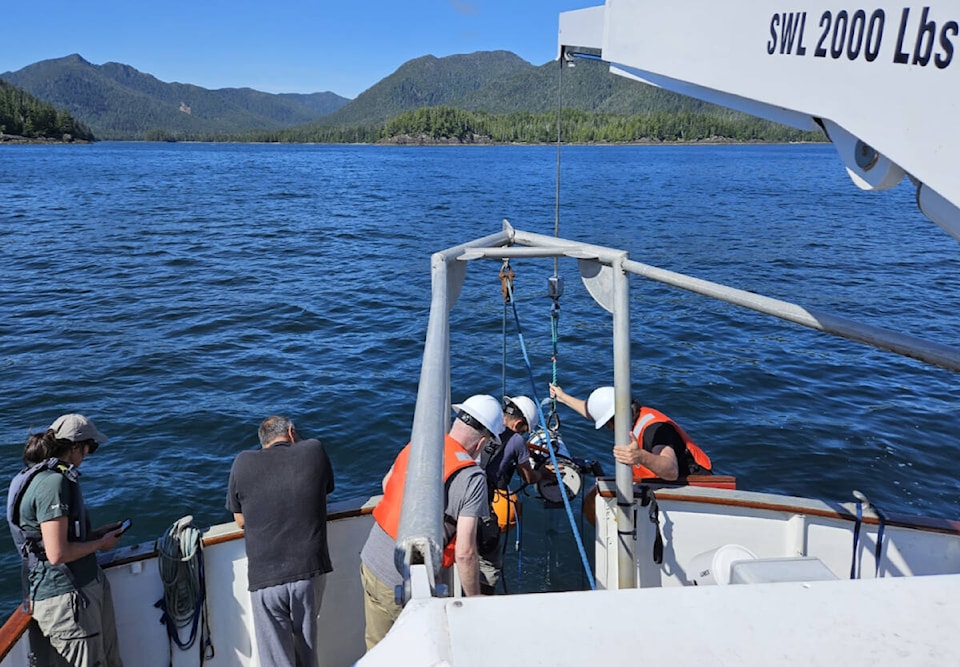Groundbreaking research on Haida Gwaii could lend more clarity to unanswered questions about how the First Peoples of the Americas arrived after the last ice age.
By testing marine core samples off the coast of Moresby Island, researchers from Simon Fraser University (SFU) and the University of Victoria (UVic) are attempting to understand the ancient paleo-landscape of the archipelago.
Led by well-respected researcher and PhD student Rob Rondeau, the research team is attempting to return to the Gwaii Haanas National Park Reserve, National Marine Conservation Area Reserve and Haida Heritage Site next summer for another core sampling expedition. Rondeau said hands-on research he conducted in Alaska four years ago, along with archeologists he met there, helped him identify the south coast of Haida Gwaii as a place of interest for his most recent project.
“The south end of Moresby Island, it holds a lot of promise. One of the reasons why we’re looking at going back is because we’ve just scratched the surface, no pun intended,” he said.
Understanding the shifting climate after the last ice age can help humans combat the current predicament of human-caused climate change, according to Rondeau.
“In some ways, it’s related to what we’re experiencing now with climate change, and we have rising sea levels today as a result of global warming,” he said. “In fact, in some places, the rate of inundation — the rate in which the sea level rises — is comparable to what was experienced at the end of the last ice age. So maybe we can learn some things from the past and apply them to the future.”
The six members of the expedition collected core samples that are currently being examined by x-ray at SFU to search for human artifacts such as stones to build tools — or use e-DNA (environmental) to find traces of humans.
How humans first arrived in North America has long been disputed, and though there has not been any definitive answer to the perennial question, Rondeau, who has also worked extensively as a diver for historical artifacts such as the Titanic, said his current research is the most rewarding of his long career.
“As far as I’m concerned, this is the most significant research that I’ve done to date,” he said. “How people came into the Americas, it’s still one of the last big questions in archaeology. So I’m happy that I can contribute to the discipline and I’m also happy to help the Haida understand their origin.”
The cooperation between the university researchers, Parks Canada and the Haida Nation was essential to the project, according to Rondeau.
According to Rondeau, the landscape 10,000-plus years ago meant the trek from Prince Rupert to Haida Gwaii could have been done by foot — and Vancouver would have been fully covered by ice.
“In the archaeological record of Haida Gwaii, there are sites nearby on Moresby Island that have dated to around 12,000 years old and older, 12,500 years old is about the oldest,” he said. “So we know that people were living on the landscape at that period.”
A brand-new underwater RIC 3500 vibracoring system from Washington State was used by the research team. The machine had never been used for a marine archeological project, but it worked extremely well. Rondeau said the machines are essential to his work, but often hard to find.
Rondeau, who has dived and done research across the globe, called Haida Gwaii “one of the most beautiful places on the planet that I have experienced.”
READ MORE: NDP confirm Taylor Bachrach for Skeena-Bulkley Valley nomination
